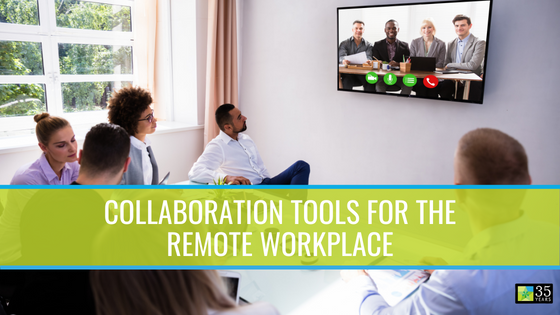[vc_row][vc_column][vc_column_text]Professional teams are doing everything remotely these days - work, meetings, collaboration, you name it. It's a trend that's only accelerated since the 2020 pandemic, but the transition to remote work was already in full swing among many companies.
That transition is an important one for every business to consider now, as people value work-from-home opportunities. Businesses have also noted improved productivity from employees who work remotely, so the arrangement benefits both sides.
The challenge is how to unify your remote and onsite workers together, so that everyone feels like they're part of the team.
AV is what helps companies take this challenge on. In the last few years, AV manufacturers have created a plethora of collaboration tools, many of them designed for remote and hybrid teams. With these tools, your teams will be able to communicate and collaborate wherever they are.[/vc_column_text][/vc_column][/vc_row][vc_row][vc_column][vc_column_text]
Video Is The Foundation Of Every Remote Collaboration Solution
Video conferencing technology is the primary tool backing any remote workflow. It's been around for decades, but once millions of people were pushed out of the office, video conferencing became vital for operational purposes. This, along with the rise of Zoom, Microsoft Teams and other usability-first platforms, has helped professionals get comfortable with being on camera and discussing projects with colleagues. Popular video conferencing platforms are also designed to fit perfectly into a unified communications (UC) approach. Zoom, Microsoft, Cisco and Google all have apps for mobile conferencing, so users can collaborate and exchange ideas wherever they are.Video Conferencing Software Is Designed For Interoperability
Your organization likely has existing hardware it would like to leverage for any new video conferencing solution. Fortunately, some of the historical leaders in video conferencing hardware - brands like Poly and Crestron - are partnered with Zoom, Microsoft and others. If you've already got an existing Poly or Crestron system in place, it's likely compatible with the most popular software solutions available. And while it's more difficult to maintain multiple conferencing solutions, many organizations do rely on two, three, or more collaboration tools for their remote and hybrid meetings. That way, companies can combine new solutions with what already works.[/vc_column_text][/vc_column][/vc_row][vc_row][vc_column][vc_column_text]The Modern Meeting Space Is Designed For Small Teams And Efficient Communication
The typical meeting involves fewer team members. It also involves onsite and remote groups. Together, this has reduced the need for traditional meeting rooms, which are now too large and inefficient for the modern workplace. Instead, businesses are carving out smaller collaboration spaces like huddle rooms and focus rooms. Instead of one large, cumbersome collaboration space, you can get two or three huddle rooms in the same area. What is a huddle room, though? These compact meeting spaces typically include the following:- A digital display, which may be interactive.
- An all-in-one conferencing solution, like a video bar. The Poly X series and Crestron Flex are popular examples.
- A small table and a few chairs. Some feature lounge furniture instead for more comfortable collaboration.
- Accessible cable ports for easy connectivity. This can be built into a small conference table.



